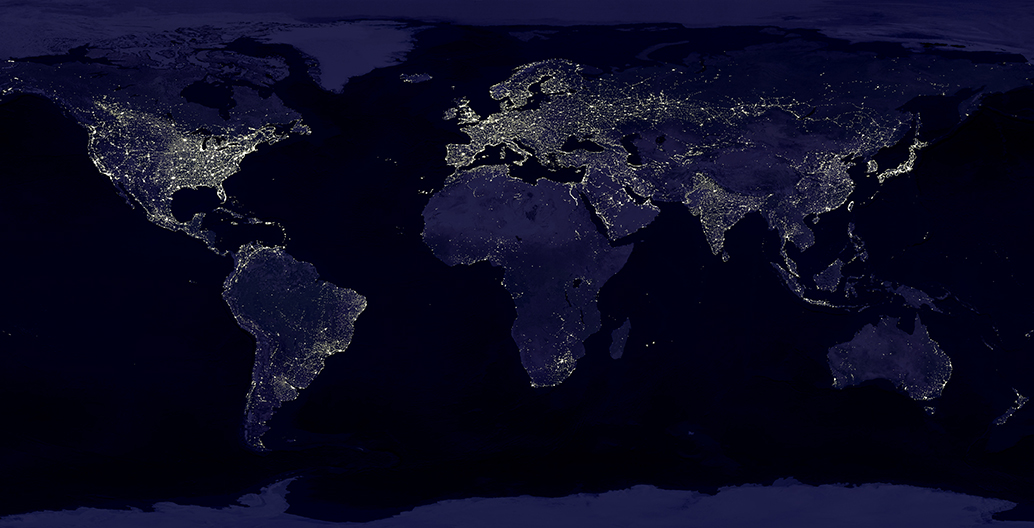
Making our mark: a guide to the Anthropocene
The idea of the Anthropocene forms a backdrop to the 2016 International Festival of Landscape Architecture. But what does the word even mean? Here’s a snapshot.
‘The phenomenon is of sufficient scale to be considered as part of the Geological Time Scale’. With these few rather administrative words, the concept of the Anthropocene was officially baptised by the International Commission on Stratigraphy (ICS), at the International Geological Congress in Cape Town in August 2016. While the idea is not new – it kicked around the backblocks of scientific discussion for decades before shifting gear into mainstream scientific discussion in 2000 – this announcement marks a poignant moment of scientific consensus. Thanks to the ICS’s Anthropocene Working Group, that our impact on the earth’s ecology deserves its very own geological epoch is now beyond doubt.
This is no cause for celebration. As the ICS report states, the Anthropocene brings with it soil erosion due to ‘colonisation, agriculture, urbanisation and global warming’. The report also observes that the chemical composition of the atmosphere, oceans and soils is changing, bringing with it ‘global warming, ocean acidification and spreading oceanic dead zones’. Life on earth, both on land and sea, is suffering massive ‘habitat loss, predation, species invasions’. After the Holocene’s 12,000-year reign (since the last ice age) it has taken us just a few generations, to do all that.
Scientific use of the word Anthropocene goes back as far as the 1960s, with its first recorded use by Soviet scientists. However, it was the writings of Paul Crutzen and Eugene Stoermer that broke the story to a wider audience, giving birth to thousands of academic citations in the fields of science, politics and economics. Crutzen is a Dutch, Nobel Prize-winning atmospheric chemist, while Stoermer was a biologist who studied algae and phytoplankton. It was their joint essay in the International Geosphere-Biosphere Programme (IGBP) Newsletter 41 that galvanised scientific discussion, when they observed that ‘data retrieved from glacial ice cores show the beginning of a growth in the atmospheric concentrations of several “greenhouse gases”’. They proposed a start date for the Anthropocene as the 18th century, however more recent consensus, from scientists researching climatic, biological, and geochemical signatures of human activity in ice cores, suggests a start date of the mid-20th century.
With the ICS’s announcement in August, a host of major news and media organisations transformed what was once an academic discussion into dinner-time conversation. Suddenly the Anthropocene become ‘front page news’ with recent feature editorials in the Independent, the Huffington Post, the New York Times, Le Monde and the Hindu.
But if the idea has been around for many years, why has it taken us so long to reach some degree of consensus on this matter of geological record? There are two reasons: one technical, the other political.
The first answer to why it has taken so long to endorse the Anthropocene, is in fact that the Anthropocene was rushed. Geological epochs are typically identified through ‘markers’ in layers of rock. These rock layers, or ‘strata’, carry information about such things as the earth’s biological, atmospheric or chemical make-up. However, the geological clock is a slow one, with epochs often taking millions of years to become immortalised in stone. As the Anthropocene is, at the very most, only a few hundred years old, it has not yet hit the rock record. Instead, the evidence of the Anthropocene era is buried in layers of ice, levels of radioactivity, or interpreted through species extinction. Given that the Anthropocene is framed by such a diverse range of indicators, you could say the scientists have been working flat out to arrive at consensus. It’s almost as if this new epoch is motivated by something other than just geology.
This leads us to the second interesting aspect of why dozens of scientists have laboured to name the Anthropocene. Like climate science, it has sparked a controversy: the kind of controversy that means you better be right. The Anthropocene begs profound questions of us all, and of the commercial exploitation of the planet. It’s impossible to talk about the Anthropocene without talking about the need to curb consumption and manage waste better. It inevitably pitches conservation against business as usual.
This idea of the Anthropocene forms the backdrop to the 2016 International Festival of Landscape Architecture, as it is woven into all aspects of its program. As its creative direct Richard Weller says, ‘the major dynamics of the Anthropocene – global urbanisation and climate change – are, at root, landscape architectural in nature. They are interrelated issues to which landscape architects can in theory, and increasingly in practice, uniquely apply both scientific knowledge and artistic imagination.’
One thing is for sure, this is not a word that will go away. On both sides the rhetoric is ramping up, from self-proclaimed ecosocialists to free-market deniers. Who would have thought that atmospheric chemistry and phytoplankton could trigger such a debate about our impact on the planet?


